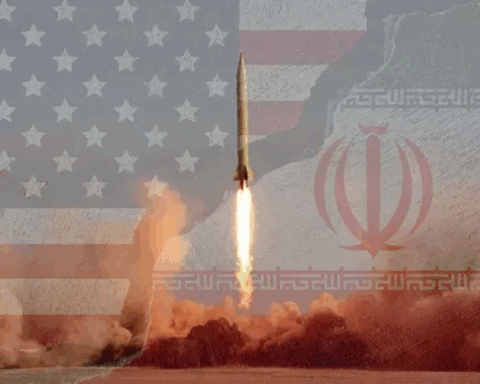In the scorching heat of Muscat, the capital of Oman, the latest encounter between the United States and Iran unfolded—not as a conventional negotiation, but as the most critical diplomatic contact between the two countries in over three years. Yet this meeting felt less like a diplomatic table and more like a tense “first contact” shadowed by deep mistrust, regional power plays, and the looming specter of war.
Escalating Demands on Both Sides
The official agenda was to halt Iran’s uranium enrichment, which has now reached 60% purity—just one step away from the 90% needed for a nuclear weapon. At this level, Iran possesses the capability to produce six nuclear bombs. Washington’s goals are clear: push Tehran back from this threshold, shut down its ballistic missile program, and end its support for proxy groups like Hezbollah and the Houthis. For Tehran, these are non-starters.
Iran, for its part, is demanding the lifting of severe economic sanctions and security guarantees against potential American military strikes. Iranian Foreign Minister Abbas Araghchi made Tehran’s position unmistakably clear: “Our nuclear program is irreversible.” With that statement, any notion of freezing or suspending enrichment was effectively removed from the table.
Even the Format of Talks Sparks Dispute
The Trump administration insists on direct talks, while Iran insists on Omani mediation. This seemingly procedural disagreement carries political weight: Tehran sees direct engagement with Washington as conferring legitimacy—and refuses to grant it. In other words, even before the table is set, both sides have hardened their positions.
Trump’s Contradictory Strategy
President Trump’s approach is anything but consistent. One moment, he announces that talks have begun; the next, he invites Israeli Prime Minister Netanyahu to the White House and openly floats the option of an Israeli strike on Iran—before stating in the same breath that diplomacy is the better route. These mixed signals are seen as part of a strategy to destabilize Tehran.
Meanwhile, the Trump administration has launched intense airstrikes against the Houthis in Yemen—Iran’s last actively engaged proxy force in the region. One of these operations was even leaked to the press by mistake. Washington has also given Israel what many see as a green light for operations against Hamas and Hezbollah.
Breaking the “Axis of Resistance”
Trump’s underlying objective is to weaken Iran’s network of proxy forces—known as the “Axis of Resistance”—and thereby force Tehran to the table in a weakened position. But this approach may backfire. Attacks on the Houthis have sparked a surge in anti-American sentiment across the region. Iran’s top security officials have threatened U.S. bases, and the tension is now threatening not only diplomacy but global trade, especially as shipping routes through the Red Sea grow increasingly unstable.
Unrealistic Demands, Deadlocked Diplomacy
Iran’s current nuclear capability far exceeds the limits set by the JCPOA deal, from which Trump withdrew in 2018. Back then, enrichment was capped at 3.67%. Today, it’s at 60%, with advanced centrifuges and a stockpile that could be weaponized within weeks.
Trump has issued a 60-day ultimatum to Iran, set to expire in mid-June. Experts argue the deadline is symbolic at best—more a campaign maneuver than a real diplomatic or military marker.
Conclusion: Less a Negotiation, More a Temperature Check
This meeting in Oman was less about negotiation and more about taking each other’s temperature. Iran, facing economic collapse, seeks sanctions relief as a matter of regime survival. Trump, on the other hand, wants to bolster his regional stature, guarantee Israel’s security, and carve out a legacy with a “new deal” under his name.
But the chasm between the two sides is as wide as the Strait of Hormuz. Iran is unlikely to abandon its proxies, freeze its nuclear ambitions, or sit directly with Washington under current conditions. Trump’s inflammatory rhetoric and Iran’s red lines may be enough to topple any chance of a peace table before it’s even built.
- Tension Between Donald Trump and Elon Musk: Is a Major Crisis Beginning in the American System? - June 6, 2025
- Harvard Faces Federal Funding Freeze Over Alleged “Disrespect to the Nation,” Says McMahon - May 6, 2025
- Tariffs, Troubles, and Transition: A Tumultuous Week for the U.S. and NYC Economy - May 6, 2025









